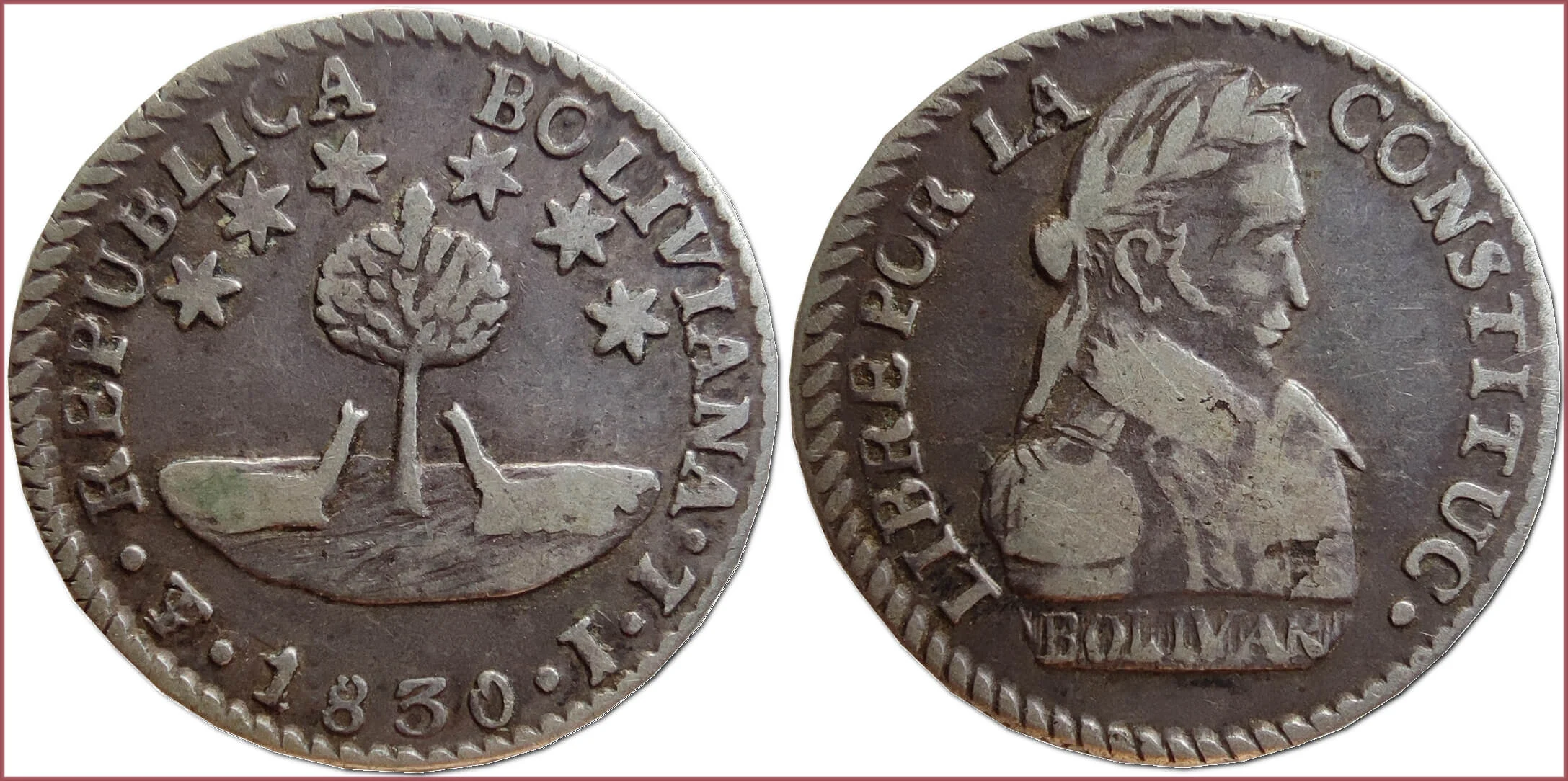SOL: COIN OF BOLIVIA
1/2 sol, 1830: Republic of Bolivia
REPUBLICA BOLIVIANA: Republic of Bolivia.
Intertwined letters "PTS" (prototype of the dollar sign): the sign of the National Mint of Bolivia, Potosi (Potosi Mint).
JL: signs (mintmarks) of coin masters — Juan Palomo y Sierra and Luis de Aquilar.
Two alpacas near a breadfruit tree and 6 six-pointed stars around: motives of the coat of arms of Bolivia.
LIBRE POR LA CONSTITUC.: FREE BY THE CONSTITUTION or FREE THROUGH THE CONSTITUTION.
BOLIVAR: Simón José Antonio de la Santísima Trinidad Bolívar y Ponte Palacios y Blanco — a Venezuelan military and political leader who led what are currently the countries of Venezuela, Bolivia, Colombia, Ecuador, Peru, and Panama to independence from the Spanish Empire.
Bolivia is named after Simón Bolívar, a Venezuelan leader in the Spanish American wars of independence.
Potosi mint.
- Silver (0.667): 16.3 mm - 1.5 g
- Reference price: 20$
COIN SOL — WHERE & WHEN (coins catalog: by names & emitents)
- REPUBLIC OF BOLIVIA (1827-1863): sol = 1/16 scudo
- UNITED PROVINCES OF THE RÍO DE LA PLATA (ARGENTINA, 1815): sol = real = 1/16 scudo
- REPUBLIC OF PERU (1863-1935; 2015-...): sol = 100 centavo
- FRANCE (16th-18th centuries): sol (later — sou) = 1/20 livre tournois
- LUXEMBOURG, DUCHY OF (18th century): sol = 80 liard
- SWISS CANTONS (Basel, Geneva… — 16th-19th centuries): sol = 1/96 thaler
The name of the sol coin is derived from the Roman solidus. It first appeared in medieval France. Over time, French sol was transformed into a new coin — sou). Later, in the 19th century, the coin spread to South America (Argentina, Bolivia, Peru). In addition, translated from Spanish, "Sol" means "sun", which is known to be one of the national symbols in the region.











